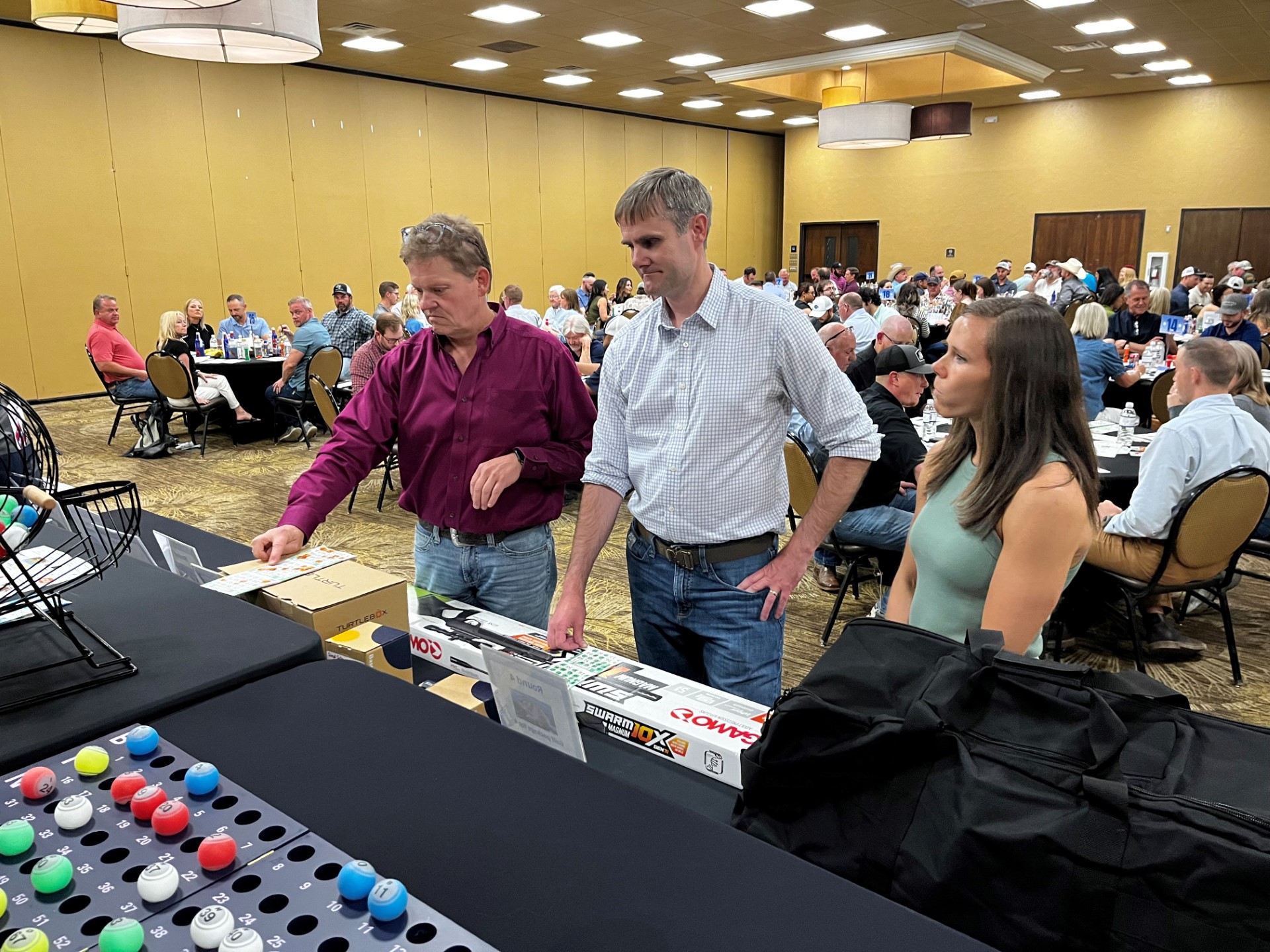Block Supplements for grazing cattle by AgriLife’s Mario Villarino

[adning id=”33097″]
 Block Supplements for grazing cattle
Block Supplements for grazing cattle
Supplementing (adding nutrients to an existing diet) is a common nutritional tool to provide extra nutrients to improve cattle body condition. Block supplements are a convenient mechanism for delivering supplemental nutrients to grazing beef cattle. As the labels on most blocks or tubs state, they are meant to be used as supplements, not feeds. Success or failure of a block/tub supplementation program will depend on the availability of forage. If forage is limited or of poor quality, self-fed blocks or tubs cannot make up the nutrient deficit and are not formulated to do so. Blocks and tubs have become increasingly popular because: They are easy to store and handle. They are easily accessible. They require little labor. Minimal equipment is required. Consumption is self-limiting. Blocks are particularly appealing to owners of the smallest herds of cattle (fewer than 50 cows) and owners of large operations of more than 300 cows. Many small producers have off-ranch employment and like the convenience and comfort of knowing supplement is continuously available. Large operators use blocks because they save time and labor. As with other supplements, blocks and tubs can vary widely in their cost, ingredient composition, nutrient content, storage requirements and consumption characteristics. Blocks and tubs generally can be divided into three categories based on the manufacturing method used:a) Pressed blocks b) Chemically hardened blocks c) Tubs and low moisture (cooked) blocks and tubs.
 Pressed Blocks: Pressed blocks are formed by blending ingredients, conditioning the mix with steam and compressing this mix under 2,000-3,000 psi of pressure. The manufacturing process is similar to that used in making pelleted feeds and supplements. Pressed protein (33 to 250 pounds) and 50 pound mineral blocks are familiar options as grazing cattle supplements. Advantages: A distinct advantage is the ability to use ingredients commonly found in dry feed mills. Disadvantages: Formulations are somewhat restrictive; ingredients that are difficult to pellet generally do not make good blocks. For example, adding high levels of fat will jeopardize block integrity. Pressed blocks may deteriorate in humid climates or if exposed to moisture. If blocks take up moisture and soften, intakes will likely be higher than predicted and increase product waste. Intake: Mature cattle generally average a daily intake of 1- 4 pounds of pressed blocks, depending on the hardness of the block and the availability (number fed per unit time).
Pressed Blocks: Pressed blocks are formed by blending ingredients, conditioning the mix with steam and compressing this mix under 2,000-3,000 psi of pressure. The manufacturing process is similar to that used in making pelleted feeds and supplements. Pressed protein (33 to 250 pounds) and 50 pound mineral blocks are familiar options as grazing cattle supplements. Advantages: A distinct advantage is the ability to use ingredients commonly found in dry feed mills. Disadvantages: Formulations are somewhat restrictive; ingredients that are difficult to pellet generally do not make good blocks. For example, adding high levels of fat will jeopardize block integrity. Pressed blocks may deteriorate in humid climates or if exposed to moisture. If blocks take up moisture and soften, intakes will likely be higher than predicted and increase product waste. Intake: Mature cattle generally average a daily intake of 1- 4 pounds of pressed blocks, depending on the hardness of the block and the availability (number fed per unit time).
Chemically Hardened Blocks and Tubs: Chemical blocks are manufactured by combining liquid and dry ingredients into a slurry. The slurry is dispensed into cardboard containers or plastic tubs and allowed to cure. The block hardens as a result of chemical reactions between water and metal oxides such as calcium oxide or magnesium oxide.Hardness of the block or tub is regulated by altering the concentration of metal oxides.Once hard, chemically set blocks do not change shape. Advantages: Chemical process blocks use many ingredients common to both liquid and dry feed manufacturing. Formulation is more flexible than the other two processes. Disadvantages: Chemical blocks may have a high ash (mineral) content. Ingredients such as magnesium oxide may limit intake because of their objectionable flavor. These blocks can deteriorate during prolonged inclement weather, especially if packaged in cardboard. Intake — Mature cattle normally consume an average of 1-3 pounds daily.
Low Moisture (Cooked) Tubs: This is the most expensive tub manufacturing process, requiring specialized blending, evaporating and packaging equipment. Liquid ingredients are heated to 240-280 degrees F (cooked), subjected to a vacuum to remove moisture, combined with dry ingredients in a blender and poured into rigid containers. Advantages: Low moisture tubs result in uniform consumption rates when used in intensive grazing environments. Also, consumption levels tend to be the lowest of the three types of blocks. Disadvantages: Packaging options are limited because these blocks tend to absorb moisture from the air. Due to the consistency of the products and their tendency to change shape, containers must be stored in the upright position. In addition, the process is somewhat restrictive in the proportions of dry ingredients that can be incorporated. Specialized manufacturing equipment is also required.Intake: Low moisture blocks soften or liquify on the surface as they absorb moisture from the air, which controls intake. Average daily intake by mature cattle generally ranges from 0.5-1.5 pounds. If forage quality is low (for example, dormant, weathered native grasses or dormant mature bermudagrass), intake of low moisture products may not provide the necessary amount of supplemental protein. When supplements are fed in extensive grazing situations (large pastures with low stock density), consumption can vary greatly.
Effective Use of Block and Tub SupplementsRead and follow label instructions. Provide blocks or tubs as soon as protein or energy deficiency is suspected and before noticeable loss of body condition. Young cattle grazing mature forages may require continuous access, regardless of expected diet/forage quality. Proper placement of the supplement in apasture affects consumption. Cattle will visit more frequently and consume more of supplements placed near water or loafing areas. If consumption is lower than expected, increase the number of tubs. If aggressive animals dominate the tubs, spread the tubs out to discourage social interactions between competing animals.
For more information on this or any other agricultural topic please contact the Hopkins County Extension Office at 903-885-3443 or email me at m-villarino@tamu.edu.
Contributed by Mario Villarino. Photos from Farm Bureau/ Mark Stebnicki
[adning id=”33207″]













